2022 was a moment of truth.
The year laid bare the political reality in Palestine from the river to the sea, dispelling any illusions that we may have had about the nature of “the conflict,” as it has been glibly called by the mainstream media. Two such illusions can be discarded immediately — for Palestinians, that the Palestinian Authority’s collaborationism can be maintained indefinitely, and for the Israeli state, that Zionism is anything other than a settler-colonial project that must constantly be at war with the Palestinian people.
Two main developments made these truths unambiguously clear.
In the West Bank, it was the return of organized armed resistance for the first time since the Second Intifada, concentrated in the cities of Nablus and Jenin, and accompanied by an equally formidable string of “lone wolf” attacks against Israeli military and settler targets, posing a serious threat to the stability of the Israeli security apparatus. The response of the Israeli state was to launch a wide-ranging military campaign across the West Bank, meant to break the back of the Palestinian resistance. The Israeli army called it “Operation Break the Wave.”
In Israel, it was the rise of the fascist right and the emergence of Itamar Ben-Gvir and Bezalel Smotrich as the new kingmakers of Israeli politics, showing the true face of Zionism to the world. What the rise of the “Jewish Power” party and the Religious Zionism party has made clear is that the Israeli state will always be at war with the Palestinian people so long as they resist the colonization of their lands.
The events of this year have only served to validate these truths. It is evident in the intensification of settler attacks against Palestinians throughout the year; in the Israeli judicial measures sanctioning the colonial confiscation of Palestinian lands; in the ethnic cleansing of communities like those in Masafer Yatta; in the launch of Operation Break the Wave and the Israeli siege on the communities and cities that harbored the new resistance groups; and most importantly, in the defiant scream of a new generation that finally dared to take up arms, at a time when a wizened leadership preferred to bow its head.
Within the first month of Israel’s military onslaught, it was clear that the Israeli army did not only target the armed groups stationed in Nablus and Jenin, but launched an assault on all of Palestinian society. During every raid in Palestinian towns and villages, the Israeli army revived its decades-old policy of liquidation and extrajudicial killing — necessary instruments in restoring Israeli deterrence. Palestinian combatants and noncombatants alike fell before the Israeli death squads during their night invasions, reminiscent of the bloodbaths of Operation Defensive Shield in 2002.
The broader objective of this offensive against Palestinian lives was clear: to increase the cost of resistance in the hopes that Palestinians would simply give up in the face of the mounting body count.
Yet all this seems to have done is increase the determination of Palestinians to reject the constant degradation of their lives. If 2022 teaches us anything, it’s that Palestinians will never accept mere survival under colonialism.
More rights groups recognize Israeli apartheid

The year began with more recognition of Israeli Apartheid, with a report from Amnesty International accusing Israel of the crime of apartheid, saying “it is a crime against humanity, and it has to end.”
The 280-page report came one year after similar reports from Human Rights Watch and B’Tselem, and was met with widespread backlash from Israel and its supporters, who accused the report of being antisemitic. On the other hand, it was widely welcomed amongst organizations and individuals who support the movement for Palestinian freedom and justice, and was lauded as another step in the right direction towards recognizing the true nature of the reality faced by Palestinians living under Israeli control .
In a noteworthy departure from previous international and Israeli reports, the Amnesty report takes into consideration the millions of Palestinian refugees living in exile, who are denied their right to return to their homelands by Israel. The report did, however, fall short in some respects, including the failure to recognize the Palestinian people’s collective right to self-determination and the role of Zionist settler-colonialism as the driver of Israeli apartheid.
Those missing frameworks were brought back into the conversation later in the year by a coalition of Palestinian human rights groups who released a landmark report titled “Israeli Apartheid: Tool of Zionist Settler Colonialism.”
According to its authors, the objective of the report, published by Palestinian human rights group Al-Haq, is to reframe the conversation surrounding Israeli apartheid to center Palestinian narratives on their own dispossession and displacement, recognize the Palestinian people’s collective right to self-determination, and prioritize decolonization over “liberal equality” approaches to ending apartheid.
International community fails to act on Israel’s criminalization of Palestinian civil society
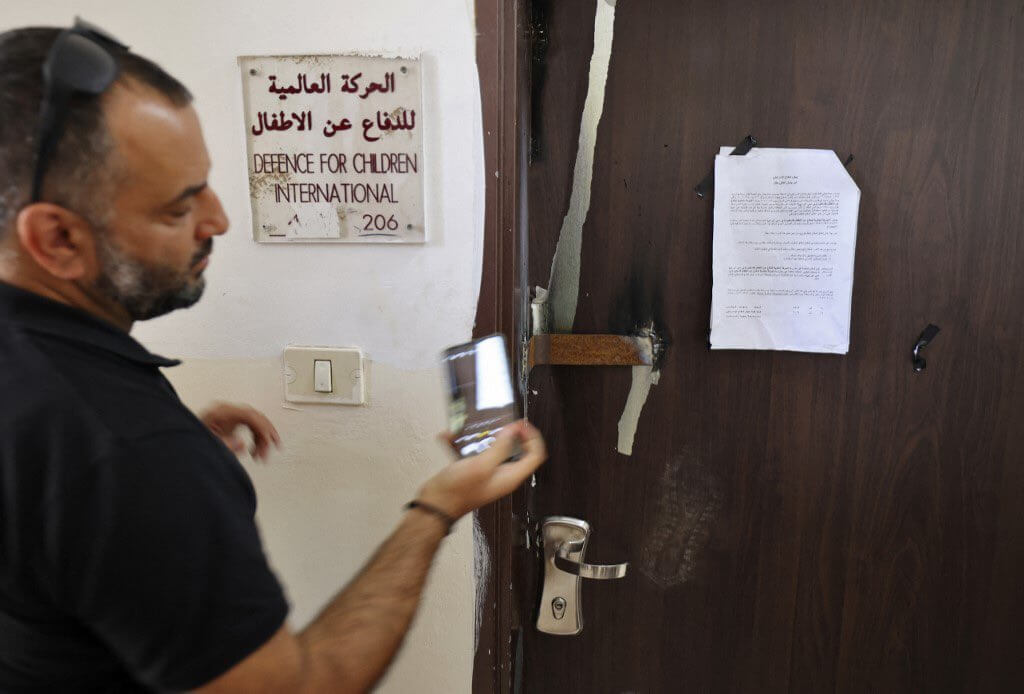
Another less prominent aspect of the Israeli assault on Palestinian society was its concerted attack on civil society — specifically, the six Palestinian human rights organizations that Israel previously attempted to criminalize by designating them as “terrorist organizations.”
The six organizations, Al-Haq, the Bisan Center for Research and Development, the Addameer Prisoner Support and Human Rights Association, Defense for Children International – Palestine, the Union of Agricultural Work Committees, and the Union of Palestinian Women’s Committees, became the target of Israel’s smear campaign years before.
Despite Israeli efforts, this June, the European Union rejected the designation of the organizations as “terrorist,” citing a lack of evidence. This came after Israel had already deported the director of Human Rights Watch from the region in 2019.
Two months after the EU’s rejection of the Israeli government’s smear campaign, the Israeli army raided the offices of the organizations, in addition to the office of a seventh organization — the Union of Health Work Committees (UHWC) — and welded shut their office doors, leaving a military order banning their continued activity.
The attempt to shut down these organizations came amid a full-fledged military offensive across the West Bank, which limited the capacities of employees and workers to perform their jobs as they tackled the unsubstantiated accusations against them.
Another dangerous development extended beyond civil society and targeted Palestinian residents of Jerusalem, exemplified by the Israeli court’s expansion of its judicial power to further drive Palestinians out of Jerusalem. This practice was exemplified this year in the deportation of Salah Hammouri, a Jerusalem-born Palestinian with French citizenship and a Jerusalem ID. His residency status was revoked under the discriminatory Israeli “breach of allegiance” law, which demands loyalty from a colonized people to the state that colonizes them.
Masafer Yatta residents lose 20-year legal battle
After a legal battle that lasted for more than 20 years in Israeli courts, the Palestinian residents of Masafer Yatta, or the South Hebron Hills, had their fate handed to them by the Israeli High Court in May. The court ruled that the Palestinians, which number around 1,300 people, were residing “illegally” on land that was declared an Israeli military firing zone in the 1990s — despite the fact that the residents say they had been living there for decades prior.
The court’s decision paved the way for the Israeli military to demolish hundreds of homes in Masafer Yatta, and forcibly expel the residents from their land — a move that would amount to forcible transfer, a war crime under international law.
Just under 900 structures are under imminent threat of demolition in the “firing zone”. Those structures include homes, livestock pens, latrines, water cisterns, mosques, and schools.
Despite international outcry over the decision, the Israeli military has since demolished dozens of structures, including a school in Masafer Yatta, while the residents have been subjected to increased settler violence against their communities.
The killing of Shireen Abu Akleh, US failure to pursue justice
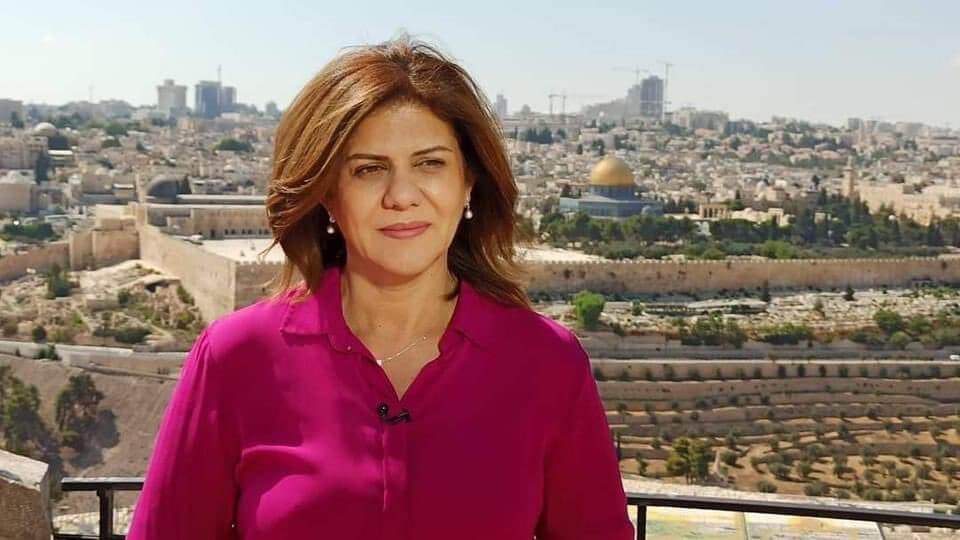
By the second month since officially declaring the launch of Operation Break the Wave, Israel’s large-scale military campaign to eradicate armed Palestinian resistance groups, prominent Palestinian-American journalist Shireen Abu Akleh was killed by the Israeli army as she wore her PRESS vest while covering an Israeli invasion of Jenin refugee camp.
Israeli military spokespersons attempted to cast blame on armed Palestinians, who at the time were confronting the Israeli invasion, and one spokesperson said that Abu Akleh and her fellow journalists had been “armed with cameras.”
Amid the failure to probe the killing, independent investigations by various news organizations and agencies show that the bullet which killed the revered journalist came from the Israeli army. Almost half a year later, there has been no accountability for Abu Akleh’s death, despite the fact that the Israeli army has admitted that it probably killed the revered journalist “by accident.” From the US side, the Biden administration has opposed Al-Jazeera’s pursuit of justice for Shireen at the International Criminal Court (ICC).
ِAbu Akleh’s death also highlighted the intentional targeting of Palestinian journalists. In 2008, Reuters’ cameraman Fadel Shana, 23, was killed while on the job along with eight others, most of whom were under the age of 16. In 2014, another journalist, 35-year-old Simone Camilli, was on the job for the Associated Press when she was also killed while wearing her PRESS vest in Gaza. In the last two decades alone, 25 journalists have been killed in Palestine.
Abu Akleh’s death was also preceded by the brutal assault on her colleague Guevara Budeiri last year in Sheikh Jarrah as she covered settler violence. CNN correspondent Ben Wedmann, along with AP’s photojournalist Mahmoud Alian, were also assaulted. No Israeli Police personnel has been held accountable. Instead, Itamar Ben-Gvir, the settler who had erected a “bureau” in Sheikh Jarrah last year and has explicitly supported the killing of Palestinians, has ended up becoming a powerful minister in control of armed Israeli forces.
Biden visits occupied West Bank, offers platitudes & economic successions
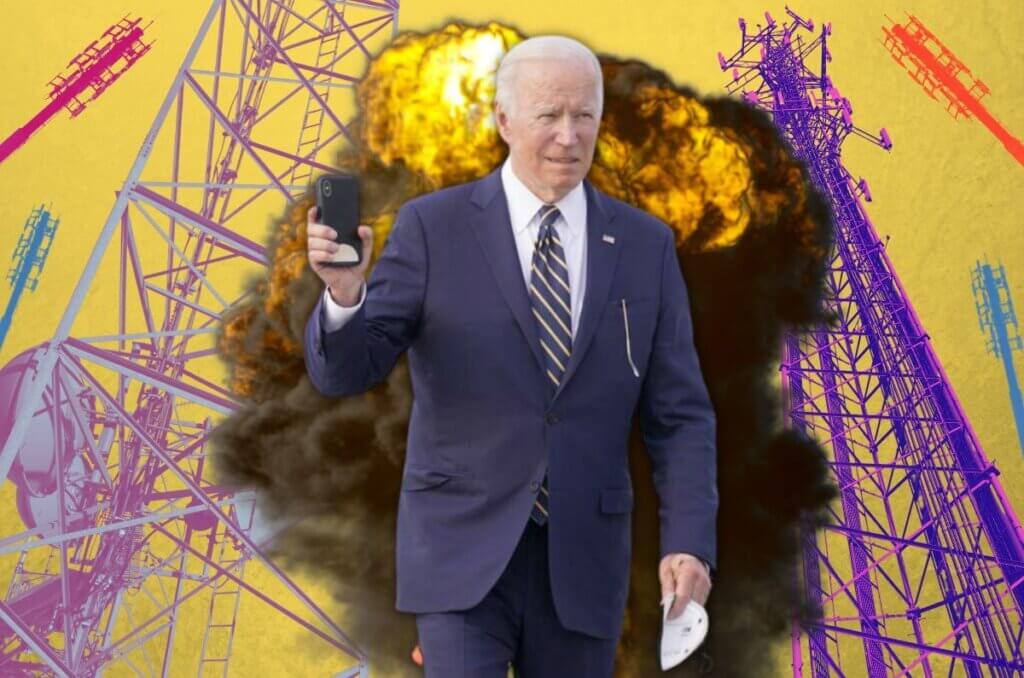
In mid-July, US President Joe Biden embarked on a tour of the Middle East, including a trip to Israel and the occupied Palestinian territory. In his two-day tour, he visited hospitals in occupied East Jerusalem and held a press conference with Palestinian President Mahmoud Abbas in the occupied West Bank city of Bethlehem.
While the Palestinian public was less optimistic that Biden’s visit could bring about any fundamental advances in regard to the political situation on the ground, it was a trip that the Palestinian political elite hoped could yield some benefits. Following the ruin left in former President Donald Trump’s wake, whose tenure saw the near total deterioration of diplomatic relations between the Palestinian Authority and the US government, there were hopes that Biden might change the tide of the previous four years.
On the table were hopes that Biden might reopen the decommissioned US consulate in East Jerusalem that was dedicated to servicing Palestinians or take a real stand on the killing of Palestinian-American Journalist Shireen Abu Akleh, whose killing just two months prior was, for many Palestinians, an issue that lay at the heart of Biden’s visit.
But in the end, Biden chose instead to pursue “confidence building measures” that, while welcomed by the PA, left most Palestinians frustrated and angry, as they viewed the visit of the self-declared “Zionist” president as nothing more than offering platitudes in the face of an apartheid regime, supported and funded by the US.
In addition to replenishing US funds to UNRWA, which were slashed by Trump during his presidency, Biden also promised $100 million in funds to East Jerusalem hospitals, funds for humanitarian relief, and programs that “promote Israeli-Palestinian collaboration and exchanges.” He also promised that Israel would allow Palestinians to achieve 4G connectivity by the end of the year, and that travel restrictions at the Allenby Border Crossing with Jordan would also be eased.
As of the end of the year, Palestinians are still using 3G.
Gaza marks 15 years of siege
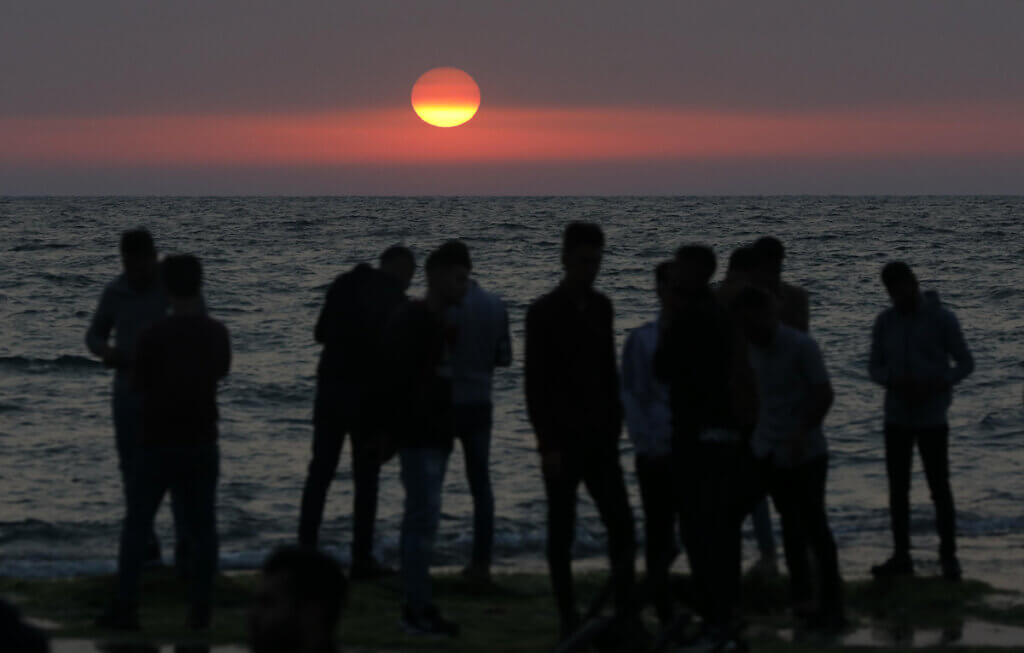
This year emphasized that the five Palestinian governorates in the besieged Gaza Strip are, in essence, a slaughterhouse. In the span of three days, the Israeli military killed 49 people. Another four Palestinians in Gaza had also succumbed to wounds sustained in previous assaults by Israel.
It also marked 15 years since the start of Israel’s blockade on Gaza, officially beginning in 2007. Yet as Mondoweiss has argued, the blockade didn’t really start in 2007, but rather was gradually engineered into the lives of Palestinians in Gaza. Moreover, the Gaza model of impunity was now expanded into the West Bank, where the tried and tested Israeli methods of collective punishment mass killings were deployed during the Israeli onslaught on West Bank cities and villages.
The UN expected Gaza to become uninhabitable by 2020. Two years later, the Strip is not only uninhabitable but has been put through two full-scale military assaults.
Operation Breaking Dawn killed 52 in Gaza
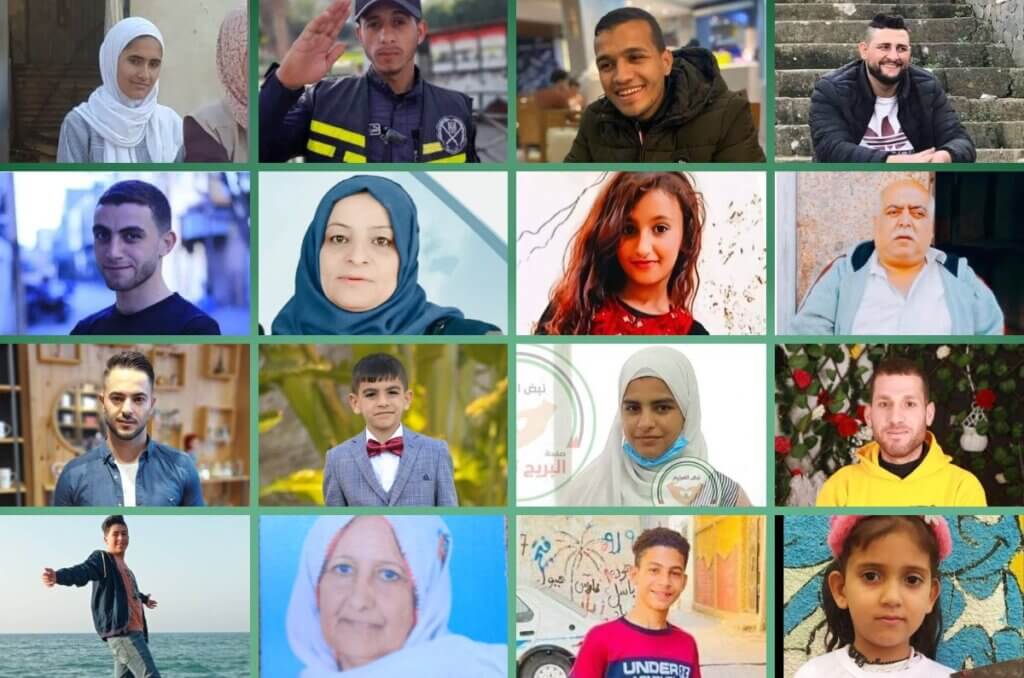
In the first few days of August, all eyes turned to the Gaza Strip, where for the second time in a year, Israel launched a military offensive on the besieged coastal enclave. Framed as a “preemptive” assault, Israel launched Operation Breaking Dawn on August 5, as the Israeli army claimed it was targeting high-level military officials within the Palestinian Islamic Jihad (PIJ) movement.
Many of the known PIJ fighters and leaders that were killed in the first airstrikes, however, were not engaged in combat when they were struck and were targeted in residential areas. As a result, many of those killed on the first day of strikes were non-combatants, including several children.
The strikes continued for two more days, targeting areas across the Gaza Strip, with PIJ responding with rocket fire toward Israeli territory. As Israel closed all border crossings in and out of the territory, Gaza’s sole power plant shut down due to fuel shortages, plunging Gaza’s residents into darkness as the airstrikes continued around them.
On 11:30 p.m. on August 8, three days after the first airstrikes, an Egyptian-brokered ceasefire took effect, and “Operation Breaking Dawn” came to an end. In total, 49 Palestinians were killed during the three days of airstrikes, including 17 children. No Israelis were killed.
Less than 10 days after the offensive ended, the Israeli army admitted to conducting the airstrike that killed five Palestinian children while they were visiting their grandfather’s grave, after initially blaming their deaths on a PIJ misfire. The youngest victim of the strike was just three years old.
Palestinian armed resistance sees resurgence in West Bank

In light of Operation Break the Wave, armed Palestinian resistance fighters became more common in the West Bank. During past years, most armed resistance against Israeli forces and settler-colonialism has come from the besieged Gaza strip, but this year armed resistance has risen from the West Bank and beyond the Green Line (from Palestinian communities living within the Israeli state). Shooting operations in March of this year targeted Israelis within the formal borders of the Israeli state and were some of the first armed activities that instigated the Israeli response.
Organized armed resistance in the West Bank, however, has almost exclusively focused on military targets and Israeli settlers. Most armed operations conducted by the various armed groups were defensive in nature, responding to Israeli invasions or encroachment upon Palestinian locales. Many of those resistance fighters are young, and some have connections with the Palestinian Security Forces, indicating a split from the older generation’s collaborationism and complicity with Israeli colonial rule.
Although the armed groups operate individually, they are guided by a sense of unity transcending factional affiliation. This means that whether aligned with an Islamist-leaning framework, such as the PIJ or Hamas, or with a more secular group, such as Fatah’s Al-Aqsa Martyrs Brigade or the leftist Popular Front for the Liberation of Palestine (PFLP), all these resistance efforts have been guided under a common umbrella.
The “lone wolf” attacks, in contrast with the organized groups, were offensive in nature, striking at Israeli military targets and settlers, often without much prior planning, and conducted from point-blank range using primitive tools (knives, pistols, or car rammings). The decentralized nature of these operations and the absence of a formal organizational structure has made them difficult to anticipate and prevent, posing a significant security challenge to the Israeli intelligence community. One of the most prominent examples was from this year, when Palestinian resistance fighter Udai Tamimi killed an Israeli soldier in a drive-by shooting at Shu’fat military checkpoint, evading capture for nearly two weeks during a protracted manhunt before eventually coming out of hiding and making a last stand at the entrance of the settlement of Maale Adumim, where he was shot and killed.
But these individual operations are not novel and have been preceded by hundreds of similar operations since 2015. The birth of officially organized groups, on the other hand, is singularly unique to this past year. The string of assassinations of prominent Palestinian resistance fighters added more fuel to the fire and hastened the emergence of these organizations. Youth like Ibrahim Al-Nabulsi, nicknamed the “Lion of Nablus,” became icons that echoed beyond the confines of Nablus and expanded to other areas in the West Bank. Youth battalions, such as the “Nabulsi Battalion,” came to life in many towns and villages.
With no institutional or formal military training, the rise of armed groups like the Jenin Brigade and the Lions’ Den pushed youth to organize their own local groups, even if smaller and without many weapons. In Ramallah and Al-Bireh, for instance, a decentralized group of youth formed the “nightly disruption battalion,” focusing on confronting Israeli invasions with Molotov cocktails and stone-throwing.
At the same time, as the youth attempted to organize, the PA was caught in the middle. Eventually, it played the role it has always played: a proxy for Israeli repression. It arrested several resistance fighters in September, which sparked a mass campaign of civil disobedience in Nablus. Later in October, the PA would play an instrumental role in offering alleged amnesty to resistance fighters in exchange for handing themselves in and giving up their weapons.
The year illustrated the complete disconnect of the PA from the concerns of Palestinian society, while its inability to meet Palestinians’ need for protection from colonial erasure has never been more stark.
Record number of Palestinians killed in West Bank in decades

This year recorded the highest number of Palestinians killed in the West Bank since the Second Intifada — more than 230 Palestinians, 171 in the West Bank. The large majority of them were either killed during search-and-arrest operations or throughout the course of an extrajudicial assassination operation, especially in Nablus and Jenin.
Of the 171 Palestinians killed in the West Bank, 36 were children and minors. That means that out of every five Palestinians killed by Israel, one was a child. The bloodiest month was October, with 30 Palestinians killed by Israeli forces in a single month, eight of whom were minors.
This intensification signals a bloody turn in the Israeli approach to Palestinian resistance, further evidenced by the loosening of Israel’s open-fire policy and the return of Israel’s decades-old strategy of extrajudicial assassination.
An unlawful crime internationally, extrajudicial killings in the West Bank clearly indicate that Israeli forces have been given clear directives to use excessive force. Children like 14-year-old Fulla Masalma suffered the consequences, killed in a car while driving through Betunia and riddling the car with bullets for 3 minutes and 55 seconds without pause.
Mondoweiss’ coverage of these killings has shown this pattern of deliberate lethal conduct, made clearer by the continuation of Palestinian resistance even during periods of lowered mortality — meaning that the high number of Palestinian deaths is a preemptive Israeli decision, a matter of deliberate policy far removed from developments in the field. The strategy underlying the obscene practice of playing with the Palestinian body count is clear: to raise the price of resistance so that Palestinians abandon the struggle.
World Cup sees unprecedented levels of Palestine Solidarity
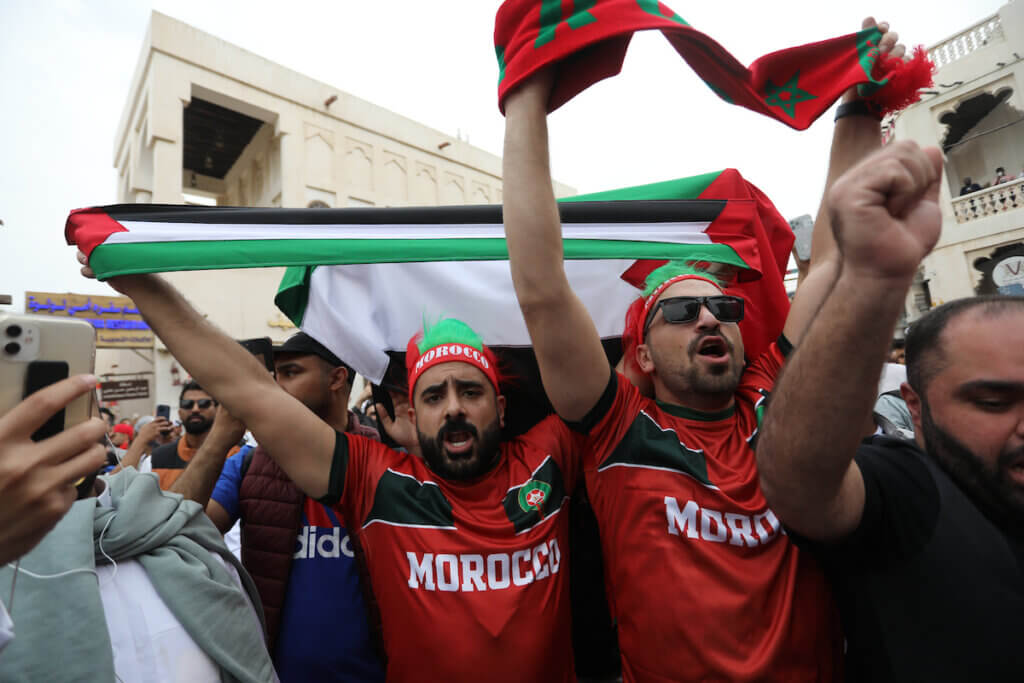
The 2022 World Cup in Qatar marked the first time the global sporting event was held in the Middle East. As a result, everything about the event was making headlines – headlines that in Western media were often rife with bias and bigotry and often contradicted what fans were actually reporting on the ground.
One thing that did make headlines, and drew both criticism and acclaim from around the world, was the presence of Palestine on center stage in Qatar, both on and off the field. Symbols emblematic of Palestine, like the flag and Keffiyeh, were present in the stadiums at nearly every match, in the crowds on the streets, international TV broadcasts, and in fan parks.
Social media platforms like Instagram and TikTok were flooded with videos of fans from around the world refusing to speak to Israeli reporters or interrupting live broadcasts from Israeli TV channels to voice their support for Palestine.
For Palestinians, the displays of solidarity were momentous and offered what felt like a much-needed glimmer of hope amidst a tumultuous and deadly year in Palestine.
“It was a wake up call to the Israelis that whatever delusions they believed they had succeeded in making through the Abraham Accords, in fact they are still not welcome in the Arab world,” Jalal Abu Akhter, a Palestinian football fan from Ramallah told Mondoweiss. “The people do not forget occupation. The people do not forget apartheid.”
Israel elects most right-wing government in history
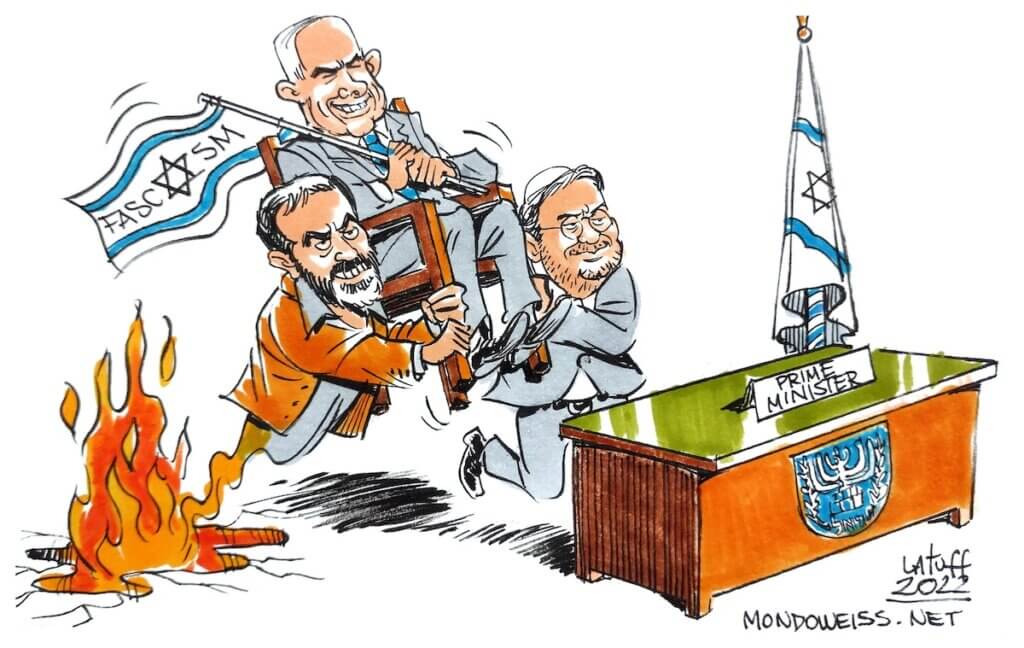
Israel held its fifth consecutive election in just four years on November 1, and the results were crystal clear: the Israeli public had spoken, and it wanted Benjamin Netanyahu back. This time around, however, there would be no room for talks with so-called “centrists,” Arab parties, or the long-forgotten Israeli “left.” It was the openly-fascist rightwing parties that won big, and they did so based mainly on a platform of Jewish supremacy and anti-Palestinian racism, led by lawmakers who had previously been convicted of incitement to racism and supporting a terrorist organization.
The ultra-nationalist Religious Zionism party, led by Itamar Ben-Gvir and Bezalel Smotrich, emerged as the third largest party in Israel’s new government, granting the two lawmakers, who have a sordid history of being openly fascist and staunchly anti-Palestinian, new levels of power they, and their supporters, had never seen before.
Ben-Gvir himself has been convicted of incitement against Palestinians and, in the past, has provided legal representation to Jewish extremists accused of committing attacks against Palestinians.
Netanyahu’s new government was sworn in on December 29, and Ben-Gvir and Smotrich are set to take on high-level positions within the Defense and National Security ministries. Their positions in the new government could see the two – both settlers living in the occupied West Bank – gain power over illegal settlements in the West Bank and new levels of power over the Israeli police.
A bill seeks to amend police regulations to allow Ben-Gvir, in his capacity as National Security Minister, to consolidate control over the police chief and police investigations, which could hold significant implications when it comes to the already lamentable rate of police investigations into settler attacks against Palestinians in the West Bank.
Looking forward into 2023
2022 was one of the bloodiest years for Palestinians in recent memory. Israel’s attempt to increase the price of Palestinian resistance led to the death of hundreds during Operation Break the Wave. Yet 2023 is shaping up to be even more tumultuous as the Israeli state appears poised to unleash a renewed wave of repression.
Just two days ago, on December 27, the Knesset approved an amendment to the Basic Law that would grant Bezalel Smotrich the power to appoint the new head of the Civil Administration and the Coordinator of Government Activities in the Territories (COGAT). Outgoing Defense Minister Benny Gantz warned of the expected escalations that would result from the hardline policies of Smotrich and Ben-Gvir, both of whom are expected to assume positions of influence regarding West Bank policy within the incoming rightwing Israeli government.
The contours of the coming year won’t be hard to predict. The ongoing colonial confiscation of Palestinian lands, the ethnic cleansing of Palestinian communities, the rabid attacks of settler lynch mobs, and the all-out assault on defiant Palestinian communities and havens of armed resistance are all likely to continue into the new year, with even greater ferocity than before.
But the one factor that remains uncertain also means everything: what will be the fate of Palestinian resistance?
Yumna Patel is the Palestine News Director for Mondoweiss.
Mariam Barghouti is the Senior Palestine Correspondent for Mondoweiss.
Faris Giacaman is the Managing Editor for Mondoweiss.



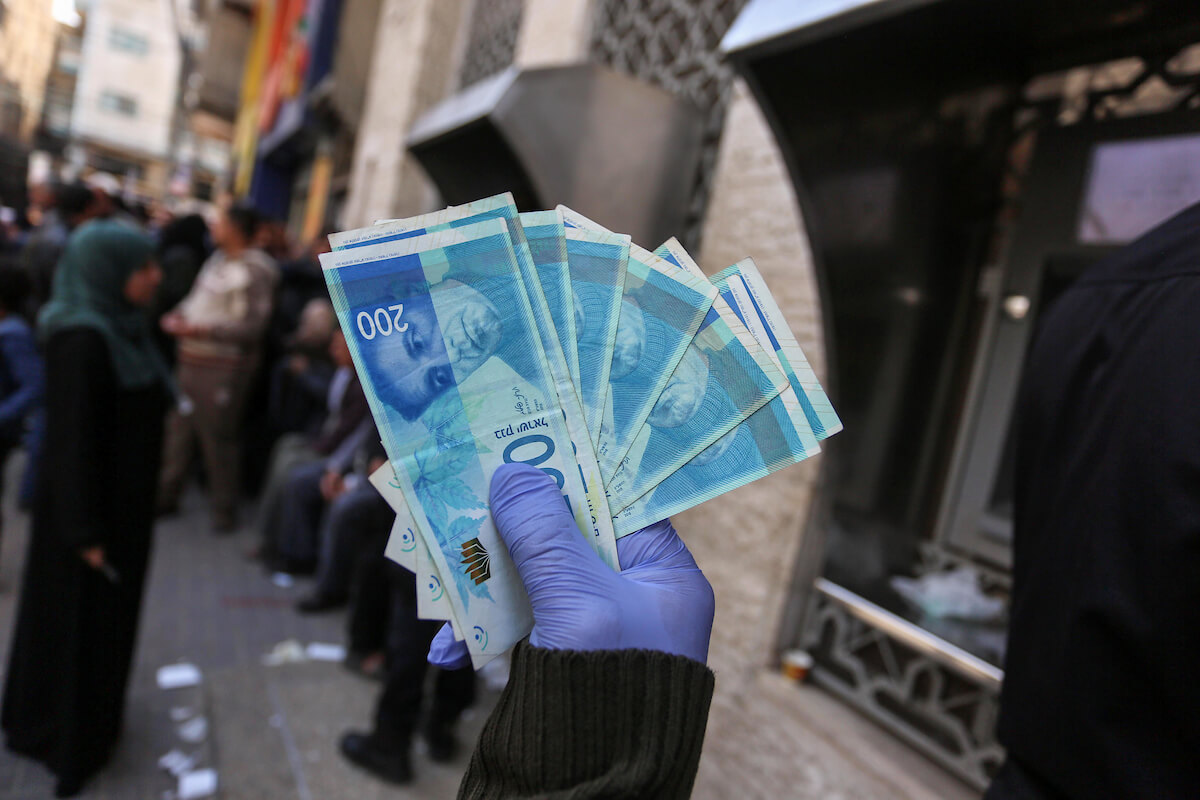
Great reporting as usual, but I disagree that the “Israeli state…will always be at war with the Palestinian people”. With hoards of (particularly young) people eager to leave the Occupation and the theft and ethnic cleansing of most of the land of Palestine by Israeli colonial Zionists, (which won’t take long to complete under Ben G’vir and Smotrich), the “Jewish State’s” (new/old) Zionist borders will be cast. Ethnic cleansing will near completion and there will be almost no-one left to complain, let alone engage in war!
Many Palestinians will be resigned to being “sent home” to “Palestine”, (aka “Jordan”) or somewhere the same. Ethnic cleansing will prevail.
Was able to get in another phone call and suggestion for CSpan’s Washington Journal about the four international reports about Israel being called out as an “apartheid” nation. This is the third time I have asked Washington Journal/Cspan why they have NEVER reported about or had alleged experts on to discuss these reports. They have not done so. Not in their archives at all.
My comment and request asking them to cover the reports are here.
At 19:11 “Kathleen Athens Ohio” First talked about my efforts to talk with Trump supporters. I was a Sanders supporter (for decades)
I bring up all of the above mentioned reports on Washington Journal this morning Saturday Dec 31st.
.https://www.c-span.org/video/?525074-4/washington-journal-news-headlines-viewer-calls
https://www.c-span.org/video/?525074-4/washington-journal-news-headlines-viewer-calls
I believe CSpan’s Washington Journal was targeted by the group “Camera” a few years ago, Camera went after Cspan for being an outlet for facts about the conflict)
I agree this is great reporting but from then on I strongly disagree. Remember Afghanistan John, first the Russians tried to obliterate them, then the Americans did the same under the guise of redeeming the Afghans from themselves. The Afghans are still there, hanging on by a thread due to American sanctions and undercover operations. Perhaps the world will wake up and decide hey we are all human beings let’s abandon warmongering and all live together peaceably whatever our ethnicity, religion or nationality.